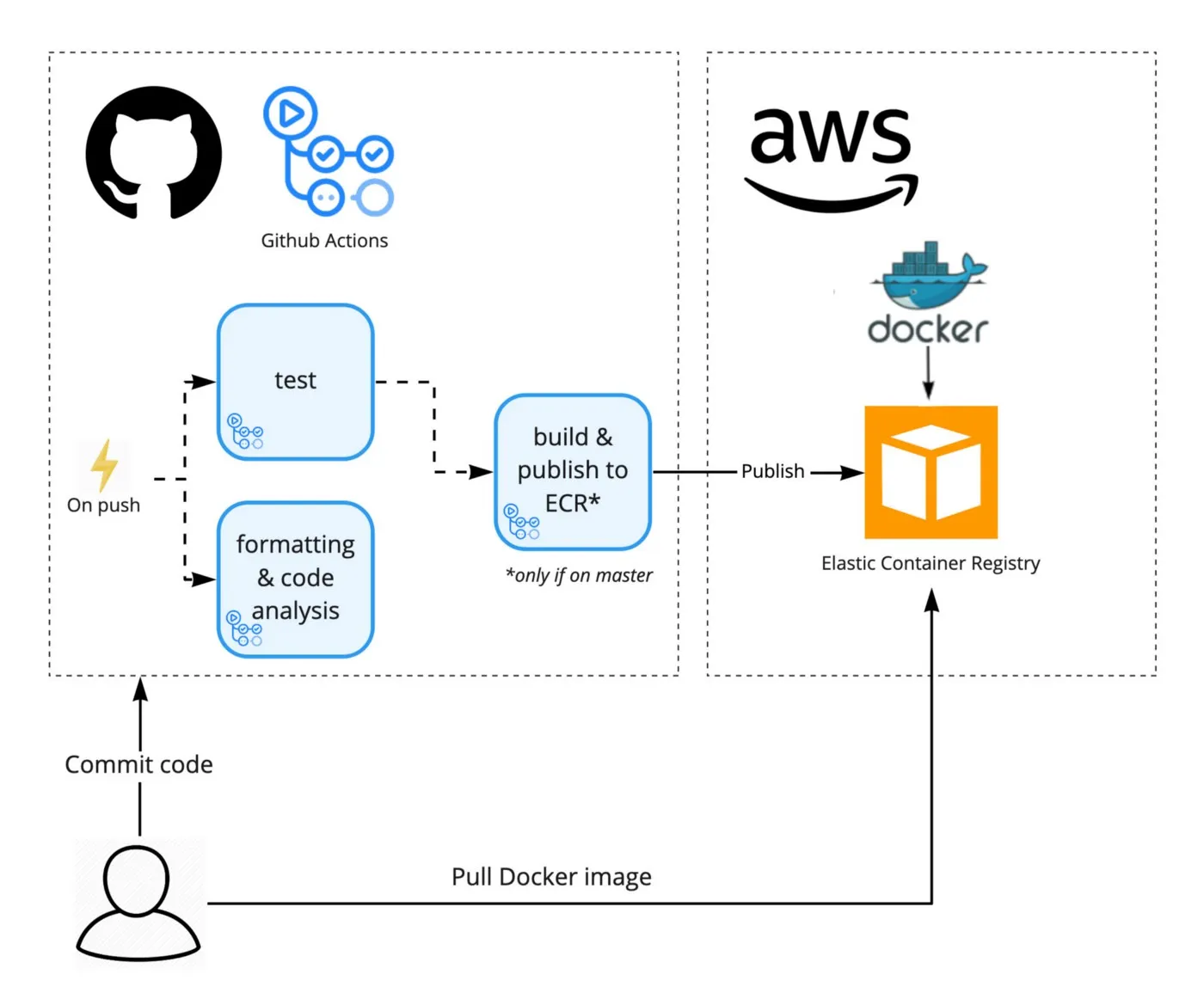In the rapidly evolving landscape of software development and delivery, Continuous Integration and Continuous Delivery (CI/CD) allow developers to frequently and reliably deliver code changes. AWS, the world's leading cloud provider, offers an array of native CI/CD tools that streamline and automate the software delivery process.
This article explores AWS native CI/CD tools: AWS CodeCommit, AWS CodeBuild, AWS CodeDeploy, and AWS CodePipeline. We will explore their functionalities, benefits, and how they collectively shape an efficient and robust DevOps pipeline. We will also provide best practices for leveraging these tools to their full potential, including principles like Infrastructure as Code (IaC), and strategic considerations like caching, security, monitoring, and rollback strategies.
What Are CI/CD Tools?
CI/CD tools are software applications used by developers to automate the stages of app development and deployment. Continuous Integration (CI) is a development practice where developers integrate code into a shared repository frequently, often several times a day. This practice allows for early detection and resolution of potential bugs and problems.
Continuous Deployment/Delivery, on the other hand, is a software release process that uses automated testing to validate if changes to the codebase are correct and stable for immediate autonomous deployment to a production environment. CD ensures that you can release new features to your customers quickly and in a sustainable way.
When combined, CI/CD tools form the backbone of modern DevOps operations, enabling developers to deliver code changes more frequently and reliably. This results in faster time to market, reduced risk, and better quality software.
AWS Native CI/CD Tools
Amazon Web Services (AWS) offers several native CI/CD tools that help automate software delivery processes:
AWS CodeCommit
AWS CodeCommit is a fully-managed source control service that hosts secure Git-based repositories. It allows teams to collaborate on code in a secure and highly scalable ecosystem. CodeCommit eliminates the need to operate your own source control system or worry about scaling its infrastructure.
With CodeCommit, you can securely store anything from source code to binaries, and it supports the standard functionality of Git, allowing it to work seamlessly with your existing Git-based tools. Furthermore, this robust tool is designed to work with other AWS services, making it a critical piece in the CI/CD toolchain.
AWS CodeBuild
Next in line is AWS CodeBuild, a fully managed continuous integration service that compiles source code, runs tests, and produces software packages that are ready to deploy. With CodeBuild, you don't need to provision, manage, and scale your own build servers.
CodeBuild scales continuously and processes multiple builds concurrently, which means your builds are not left waiting in a queue. You can also customize build environments in CodeBuild using your own build tools. This versatility makes AWS CodeBuild an essential tool in your CI/CD arsenal.
AWS CodeDeploy
AWS CodeDeploy is a fully managed deployment service that automates software deployments to a variety of compute services such as Amazon EC2, AWS Fargate, AWS Lambda, and your on-premises servers. AWS CodeDeploy makes it easier for you to rapidly release new features, helps avoid downtime during deployment, and handles the complexity of updating your applications.
With AWS CodeDeploy, you can automate deployments, eliminating the need for manual operations. It also provides a centralized overview of deployment status and deployment health, making it easier to manage and troubleshoot your applications.
AWS CodePipeline
Finally, we have AWS CodePipeline, a fully managed continuous delivery service that helps you automate your release pipelines for fast and reliable application and infrastructure updates. CodePipeline automates the build, test, and deploy phases of your release process every time there is a code change, based on the release model you define.
This tool offers a robust platform for managing end-to-end software release processes. With AWS CodePipeline, you can model, visualize, and automate steps required to release your software, making it easier to rapidly and reliably deliver features and updates.
Best Practices for Using CI/CD on AWS With Its Native Tools
Use Infrastructure as Code (IaC)
Infrastructure as Code (IaC) is one of the core tenets of the DevOps philosophy. It essentially means treating your servers and other infrastructure like software, i.e., versioned and stored in a repository, and deployed via automation. AWS provides CloudFormation, a service that enables you to manage your infrastructure's resources in a text file format. This allows you to track changes, replicate your infrastructure quickly, and recover from disasters more efficiently.
Using IaC not only reduces human error but also ensures consistency across your environments. It allows you to spin up an entirely new environment to test new features or to replicate your production environment in a staging area for thorough testing before deployment. With IaC, you can manage your infrastructure with the same rigor as your application code.
Leverage AWS CodeCommit for Source Control
Source control is the linchpin of any successful software development process. AWS CodeCommit is a fully-managed source control service that hosts secure Git-based repositories. It seamlessly integrates with your existing Git-based workflows while providing the scalability, speed, and reliability needed for your projects.
CodeCommit offers features like pull requests, branch comparisons, and notifications that can enhance your team's code review process. It plays a crucial role in the CI/CD pipeline, triggering builds when changes are committed to your repository. A solid understanding and efficient usage of CodeCommit can significantly streamline your development and deployment processes.
Utilize AWS CodeBuild for Compilation and Testing
AWS CodeBuild is a fully managed build service that compiles your source code, runs tests, and produces software packages ready to deploy. With CodeBuild, you don't need to provision, manage, and scale your build servers. CodeBuild scales continuously and processes multiple builds concurrently, meaning your builds are not left in a queue.
CodeBuild is also extremely versatile and supports several build environments, including but not limited to Java, .NET, Node.js, Python, Ruby, Go, and Docker. By leveraging CodeBuild, you can save time and resources while ensuring that your application is being thoroughly tested and prepared for deployment.
Automate Deployment with AWS CodeDeploy
Once your application passes all tests in CodeBuild, it's time for deployment. AWS CodeDeploy automates application deployments to various compute services such as Amazon EC2, AWS Fargate, AWS Lambda, and your on-premises servers. It helps to eliminate the downtime during application deployment and handles the complexity of updating your applications.
CodeDeploy provides a feature called 'Deployment Configurations' which dictate the pace and success conditions for a deployment. Using these configurations, you can implement deployment strategies like Canary and Blue/Green, which minimizes downtime and risk. Automating your deployments with CodeDeploy not only speeds up the process but also makes it more reliable.
Orchestrate the Pipeline with AWS CodePipeline
AWS CodePipeline is a fully managed continuous delivery service that helps you automate your release pipelines for fast and reliable application updates. CodePipeline orchestrates the steps required to release your software changes continuously. It integrates with AWS tools like CodeCommit, CodeBuild, and CodeDeploy, as well as third-party tools, providing a one-stop solution for your CI/CD needs.
With CodePipeline, you can model, visualize, and automate the steps required to release your software. You can quickly iterate on and deliver features and updates based on user feedback, all while maintaining high quality and stability of your applications.
Leverage Caching to Speed up Builds
One of the ways to speed up your build process is by leveraging caching. AWS CodeBuild supports the use of a cache to reuse build dependencies that are downloaded during a build. This cache can be shared across different builds to reduce build time.
The cache is particularly useful when your build process involves time-consuming tasks such as downloading dependencies or installing software. With caching, these tasks need to be performed only once and can be skipped in subsequent builds, significantly reducing the build time and speeding up your CI/CD pipeline.
Secure Your Pipeline
Security is a paramount concern in any software development and deployment process. When setting up your CI/CD pipeline, ensure that only authorized users can make changes to your application code, infrastructure code, and pipeline configuration. AWS provides several security features like Identity and Access Management (IAM), Security Groups, and Network Access Control Lists (NACLs) to help you secure your pipeline.
Also, consider encrypting sensitive data and using a secure connection when transferring data. AWS Key Management Service (KMS) can be used to create and manage cryptographic keys and control their use across a wide range of AWS services and in your applications.
Monitor and Log Changes with AWS CloudWatch
Monitoring your CI/CD pipeline is essential to promptly identify and address any issues that could affect your application's performance or availability. AWS CloudWatch provides a reliable, scalable, and flexible monitoring solution for your AWS resources and the applications you run on AWS.
CloudWatch collects and tracks metrics, collects and monitors log files, and responds to system-wide performance changes. With CloudWatch, you can gain system-wide visibility into resource utilization, application performance, and operational health. Implementing a robust monitoring and logging strategy with CloudWatch can help you keep your CI/CD pipeline running smoothly.
Implement a Rollback Strategy
Despite all the testing and monitoring, there might be times when things go wrong. Maybe a new feature isn't working as expected, or a bug slipped through the tests. In such cases, having a rollback strategy is crucial. AWS CodeDeploy supports automated rollback of deployments when a deployment failure is detected.
A rollback strategy provides a safety net, allowing you to quickly revert to a previous, stable state while you investigate and fix the issue. This minimizes the impact on your end-users and allows your team to continue delivering value.
Conclusion
In conclusion, CI/CD tools on AWS offer a powerful, flexible, and scalable solution for your software development and deployment needs. By following the best practices outlined in this guide, you can unlock the true potential of these tools and significantly enhance your team's efficiency and productivity.


